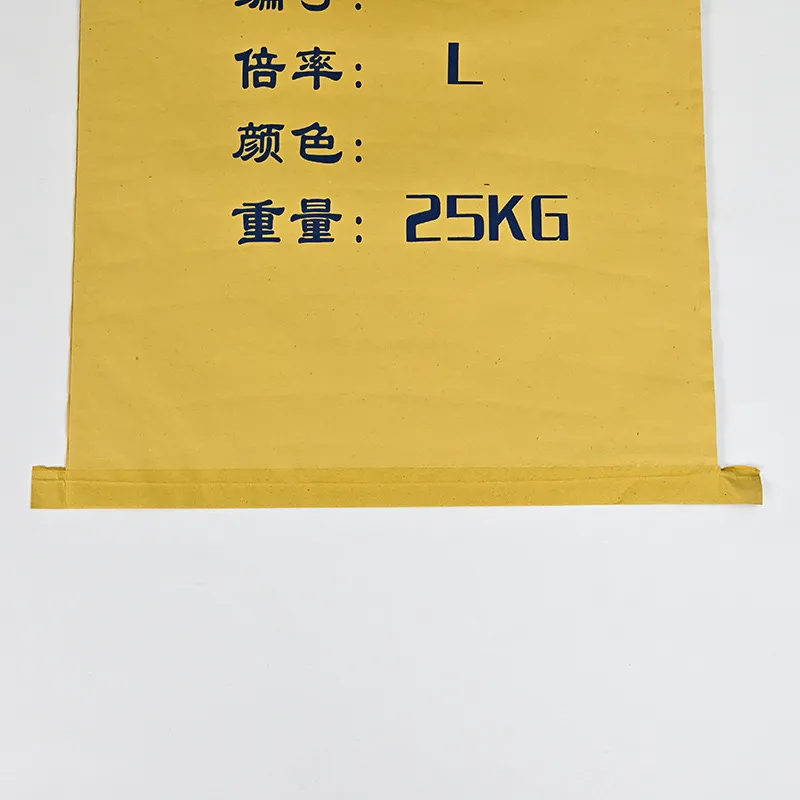
In today’s industrial packaging landscape, choosing the right materials is critical for ensuring product integrity and safety. One noteworthy innovation in this field is the use of aluminum foil as an inner layer in Kraft paper aluminum foil bags. This approach has unique advantages over standard Kraft paper woven bags, especially when packaging chemical products and raw materials such as fertilizers, plastic pellets, activated carbon, carbon black, and disinfectants. Understanding these benefits will help manufacturers and distributors make informed choices tailored to their specific needs.
The Importance of Aluminum Foil in Kraft Paper Bags
Kraft paper aluminum foil bags are designed to provide superior protection against various external factors that can compromise the integrity of their contents. Aluminum foil serves multiple purposes in this context:
- Barrier Protection: Aluminum foil acts as an excellent barrier against moisture, light, air, and other environmental contaminants. This is particularly essential when packaging chemical products, which may be sensitive to exposure.
- Durability: The laminated structure of aluminum foil combined with Kraft paper enhances the bag’s strength, making it suitable for heavy-duty applications. This robustness is especially beneficial when handling bulk materials like fertilizers and chemicals.
- Temperature Resistance: Aluminum foil can withstand extreme temperatures, ensuring that the contents are protected even during transport or storage under varying conditions.
- Regulatory Compliance: Many chemical products require packaging that meets stringent regulatory standards. The use of aluminum foil in Kraft paper bags helps in achieving compliance with these regulations.
Comparison with Standard Kraft Paper Woven Bags
Standard Kraft paper woven bags, while useful for various applications, lack the advanced protective qualities offered by aluminum foil. Here are some of the key differences:
| Feature | Kraft Paper Aluminum Foil Bags | Standard Kraft Paper Woven Bags |
|---|---|---|
| Barrier Properties | Excellent (moisture, light) | Moderate (limited moisture control) |
| Strength | High (laminated structure) | Moderate (weaker than laminated) |
| Temperature Resistance | High | Low to moderate |
| Compliance with Standards | High (meets regulatory requirements) | Varies (may not meet specific standards) |
| Cost | Higher (due to material complexity) | Lower (simple construction) |
The comparison above illustrates why Kraft paper aluminum foil bags are preferable in many industrial settings, especially for chemical products.
Selecting the Right Packaging for Chemical Products
When choosing packaging solutions for chemicals and raw materials, several factors should be considered:
- Product Sensitivity: Different chemical products react differently to environmental conditions. For example, fertilizers may absorb moisture and clump, while activated carbon must remain dry to maintain its effectiveness. Selecting packaging that offers moisture resistance, like aluminum foil bags, is crucial.
- Weight and Bulkiness: Heavy products like carbon black and plastic pellets require robust packaging that can withstand the weight during storage and transport. Multi-wall woven bags and laminated woven bags are often recommended due to their reinforced structures.
- Regulatory Requirements: Compliance with local and international regulations is non-negotiable. Ensure that the packaging used meets the necessary safety and quality standards, especially for hazardous materials.
- Environmental Considerations: With a growing focus on sustainability, choosing packaging materials that are recyclable or made from renewable resources is becoming increasingly important. Laminated Kraft paper bags can be designed with eco-friendly considerations in mind.
- Customizability: Brands often require custom printing on their packaging to enhance branding and information. Laminated Kraft paper sacks and paper valve woven bags can be customized for these purposes, making them a versatile choice.
Additional Considerations for Packaging Chemical Products
Packaging chemical products demands additional precautions compared to other applications. Here are some specific points to consider:
- Seal Integrity: Ensure that the bags are well-sealed to prevent leaks. The advanced sealing technology used in laminated bags ensures that they remain leak-proof and airtight, which is vital for volatile substances.
- Labeling and Information: Accurate labeling is crucial for safety and compliance. Packaging should clearly indicate the contents, hazards, and handling instructions to mitigate risks during transportation and storage.
- Handling Instructions: Consider adding handling instructions directly on the packaging to provide essential information for personnel involved in the supply chain. This can include temperature restrictions, potential hazards, and emergency procedures.
- Cost-Effectiveness: While laminated Kraft paper aluminum foil bags may have a higher upfront cost, their durability and effectiveness can lead to cost savings in the long run. Reducing product spoilage and waste can outweigh the initial investment.
Conclusion
In conclusion, Kraft paper aluminum foil bags represent a significant advancement in packaging technology, particularly for chemical products and raw materials. Their superior barrier properties, strength, and compliance with regulatory standards make them an ideal choice over standard Kraft paper woven bags. By carefully selecting the right packaging, manufacturers can ensure product integrity, safety, and compliance with industry regulations.
For more information on Laminated Kraft Paper Bags and their advantages, you can visit this link.